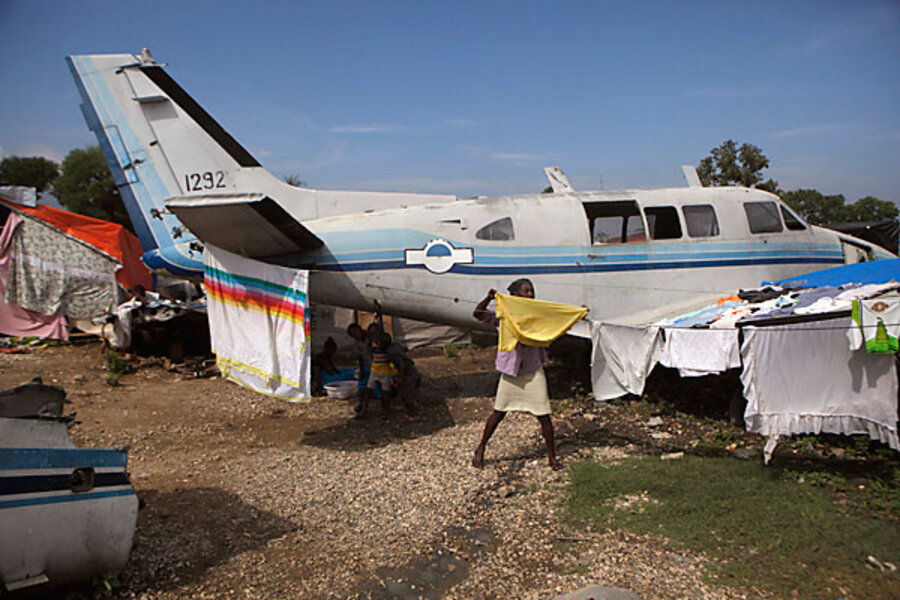In Haiti, international relief targets rats and bugs
Loading...
| Port-au-Prince
The swarm around the garbage can in the tent camp of Corail Cesselesse, north of Haiti’s capital, was not the usual composition of flies or mosquitoes. “Six different kinds of flies,” said Terminix’s Robert Young.
Mr. Young is one of a 14-member international relief delegation of the National Pest Management Association and a volunteer fact-finder trying to figure out the best way to control pests in post-earthquake refugee camps and stop the spread of disease.
Wearing blue, long-sleeved shirts and work boots, the men buzzed around Haiti's drainage ditches, stagnant water, and piles of garbage to determine what sort of creatures were thriving and what they could do to reduce their numbers.
“Our mission is to evaluate, look, listen and learn,” said Rob Lederer, NPMA’s executive vice president. “This is not a public relations opportunity. We want to figure out what the greatest public health threats are facing the Haitian people, go back to the states, come up with a plan, and then help the government of Haiti implement it.”
Working with the country’s four major pest control companies, as well as the Minister of Environment, NPMA hopes to identify trouble spots in a country where insects and rodents are as numerous as the growing piles of garbage. The increase in identified cases of malaria and dengue fever – diseases related to pests – has been moderate so far, but there are concerns of much larger problems if action isn't taken.
Pests need food, water and a place to live; garbage is their nirvana. The estimated 2 million residents of Port-au-Prince produce between 1,500 and 2,000 tons of trash a day, most of which is either scattered on the side of the road or gathered in piles that then block it. This has been the case for decades.
Of the country’s 70 vehicles earmarked for garbage pickup, only 40 are functional. The country’s waste management agency director, Harry Toussaint, says he lacks spare parts, tires, and lubricants. His budget is just 180,000,000 gourdes (approximately $4.5 million).
“Ideally,” Toussaint says “we should be going door-to-door for pickup, but with more people living in the streets, there’s more trash to pick up, and it’s even harder to get to than before [the quake] because of the rubble.”
The Jan. 12 earthquake generated enough debris to fill the Louisiana Superdome five times – approximately 20-25 million cubic yards.
With the proliferation of tent camps, sanitation is the delegation’s No. 1 concern. The aid groups in charge of toilet facilities have nearly reached the international standard of one toilet per 20 people, but there are still large numbers who prefer open fields and plastic bags.
NPMA delegation members, chosen for their area of expertise, had some immediate solutions: drill holes in containers of standing water and remove sacs of food aid from the ground where they are easy prey for rats. Other suggestions required partnership with some of NPMA’s 7,000 members: put fly bait by the dumpsters, add microbes to the septic tanks to better break down hazardous waste, and set up a system to recycle the dirty water.
“Regardless of the solution,” says Frank Meek, Orkin’s International Technical and Training Director, “what it’s going to take to be successful is a change in beliefs, practices, and process. That, and education."
Mr. Meek is optimistic. By pest control standards, finding only a population of pest brewing at one of the tent camps, as opposed to an explosion of them, meant that things were still under control.
“It’s a major problem,” he said as he went off in search of more wigglers, ”but it’s not a major epidemic.”
(This story was edited after posting to correct the name and title of NPMA executive vice president Rob Lederer.)
Related:





